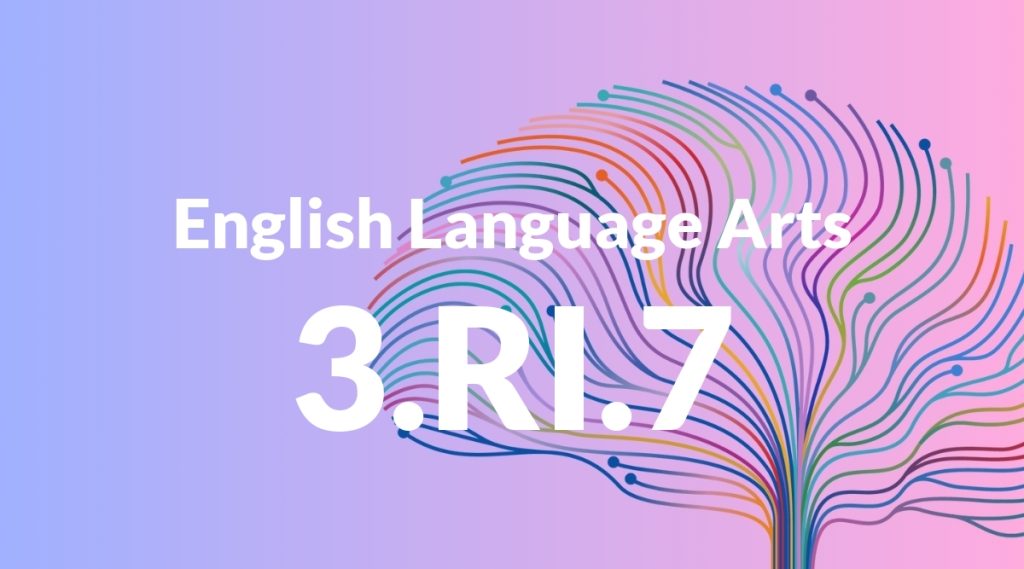Standard: 3.RI.7 – Use information gained from illustrations (e.g., maps, photographs) and the words in a text to demonstrate understanding of the text (e.g., where, when, why, and how key events occur).
Grade level: Grade 3
Subject: English Language Arts
Domain: Reading: Informational Text
Teacher Overview
This standard emphasizes the importance of using both text and illustrations to understand informational content. It helps students learn how to extract and integrate information from various sources, which is crucial for comprehensive reading comprehension. Students should already know how to identify basic text features and understand the purpose of illustrations and diagrams.
After mastering this standard, students will be able to integrate information from multiple sources, including texts and illustrations, to deepen their understanding of complex subjects.
Common Misconception 1
Some students may think that illustrations are merely decorative and do not provide valuable information. This is incorrect because illustrations often contain key details that support the text.
Intervention 1
Use guided reading sessions where students are prompted to look at illustrations and discuss what additional information they provide about the text.
Common Misconception 2
Another misconception is that the text alone is sufficient for understanding. This is not true, as illustrations can offer visual explanations that clarify and enhance the text.
Intervention 2
Create activities where students must use both text and illustrations to answer comprehension questions, reinforcing the idea that both are necessary for full understanding.
Prerequisite Knowledge
Students should be able to identify basic text features like titles, headings, and captions, and understand the purpose of illustrations and simple diagrams.
Subsequent Knowledge
Students will develop the ability to synthesize information from multiple sources, including texts and illustrations, to form a comprehensive understanding of complex topics.
Instructional Activities
- Have students create a story map using text and illustrations from a book.
- Use a Venn diagram to compare information from text and illustrations.
- Conduct a scavenger hunt where students find specific information in both text and illustrations.
- Create a class project where students present information using both text and illustrations.




